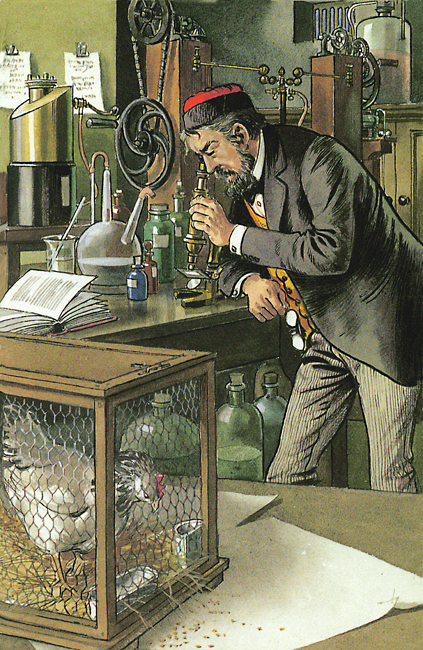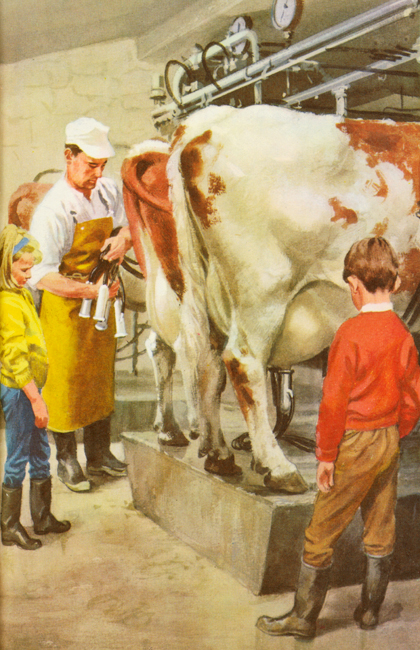Our new Science Engagement Officer, Robyn Hopcroft, provides an update on the Wellcome Trust funded project: ‘Our Country Lives: Nutrition, Health and Rural England’.
What is the relationship between rural life and science? In my role at MERL I’ll be investigating this question and finding new ways to work together with our visitors to explore three key areas:
- Food production and human nutrition
- Livestock management and animal health
- Rural health and medicine

The university’s Special Collections Service holds an archive of Ladybird books and artwork, including many beautiful illustrations relating to science and agriculture. Louis Pasteur in his laboratory from ‘The Story of Medicine’ (Author: Edmund Hunter, Illustrator: Robert Ayton) © Ladybird Books Ltd 1972.
Although I’ve only been with MERL for a few weeks, it’s already clear to me that this is the perfect place for delivery of an exciting project centred on these themes. The Museum comprises a driven team who are keen to rise to the challenge and get people thinking about big topics like food security, sustainable agriculture and the essential functions that rural life serves in contemporary society. We hold rich collections and stories that can act as conversation starters around these kinds of issues and maintain close connections with the University research community, who offer a glimpse into the future of the countryside by sharing the latest science news.

Milking the cows from ‘Fun at the Farm’ (Author: William Murray, Illustrator: Harry Wingfield). © Ladybird Books Ltd 1965.
While loads of work has already been done to incorporate scientific themes into the redevelopment of the galleries, we want to go even bigger and better. Now that I’ve started my job as the Museum’s Science Engagement Officer, the project enters a new phase. I’m looking at additional programming to get people thinking and talking about the science behind life in the countryside. To start with, I’ll be trialling some hands-on activities that relate to food and nutrition. We’re also in the very early stages of planning an artist residency, which will provide a platform for an artistic interpretation of issues relating to livestock management and animal health.
As we’re eager to get people talking online, we will be making some short films and injecting some science into our social media accounts.
This is a wonderful opportunity to work across disciplines and get stuck into finding interesting ways to connect people, science and our collections.
It’s an ambitious project, I’ll admit. But so far so good. Wish us luck!
We’ll be keeping you up to date with project developments in a ‘Wellcome news!’ series of posts here on the blog.

